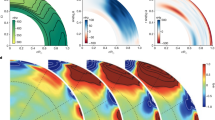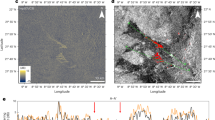Abstract
IN seismology a method has been developed of examining the focal mechanisms of earthquakes by studying the azimuthal variation of the first movements on seismograms1. In extending this method to differentiating between small earthquakes and explosions a basic experimental problem is the detection of the initial movement when its amplitude is of the order of only 10−7 cm. in the frequency-range 1–10 c.p.s., and is therefore comparable with the background microseismic noise-level at the quietest sites. The purpose of this communication is to suggest and illustrate a possible technique of increasing the signal : noise ratio.
This is a preview of subscription content, access via your institution
Access options
Subscribe to this journal
Receive 51 print issues and online access
$199.00 per year
only $3.90 per issue
Buy this article
- Purchase on Springer Link
- Instant access to full article PDF
Prices may be subject to local taxes which are calculated during checkout
Similar content being viewed by others
References
Scheidegger, A. E., Bull. Seism. Soc. Amer., 47, 89 (1957).
Kolsky, H., Stress Waves in Solids (Clarendon Press, Oxford, 1953).
Author information
Authors and Affiliations
Rights and permissions
About this article
Cite this article
KEY, F., WRIGHT, J., CARPENTER, E. et al. Possible Method for increasing the Signal–Noise Ratio in the Detection of the First Motion of a Refracted P-Wave. Nature 191, 1382–1383 (1961). https://doi.org/10.1038/1911382a0
Issue Date:
DOI: https://doi.org/10.1038/1911382a0
Comments
By submitting a comment you agree to abide by our Terms and Community Guidelines. If you find something abusive or that does not comply with our terms or guidelines please flag it as inappropriate.



